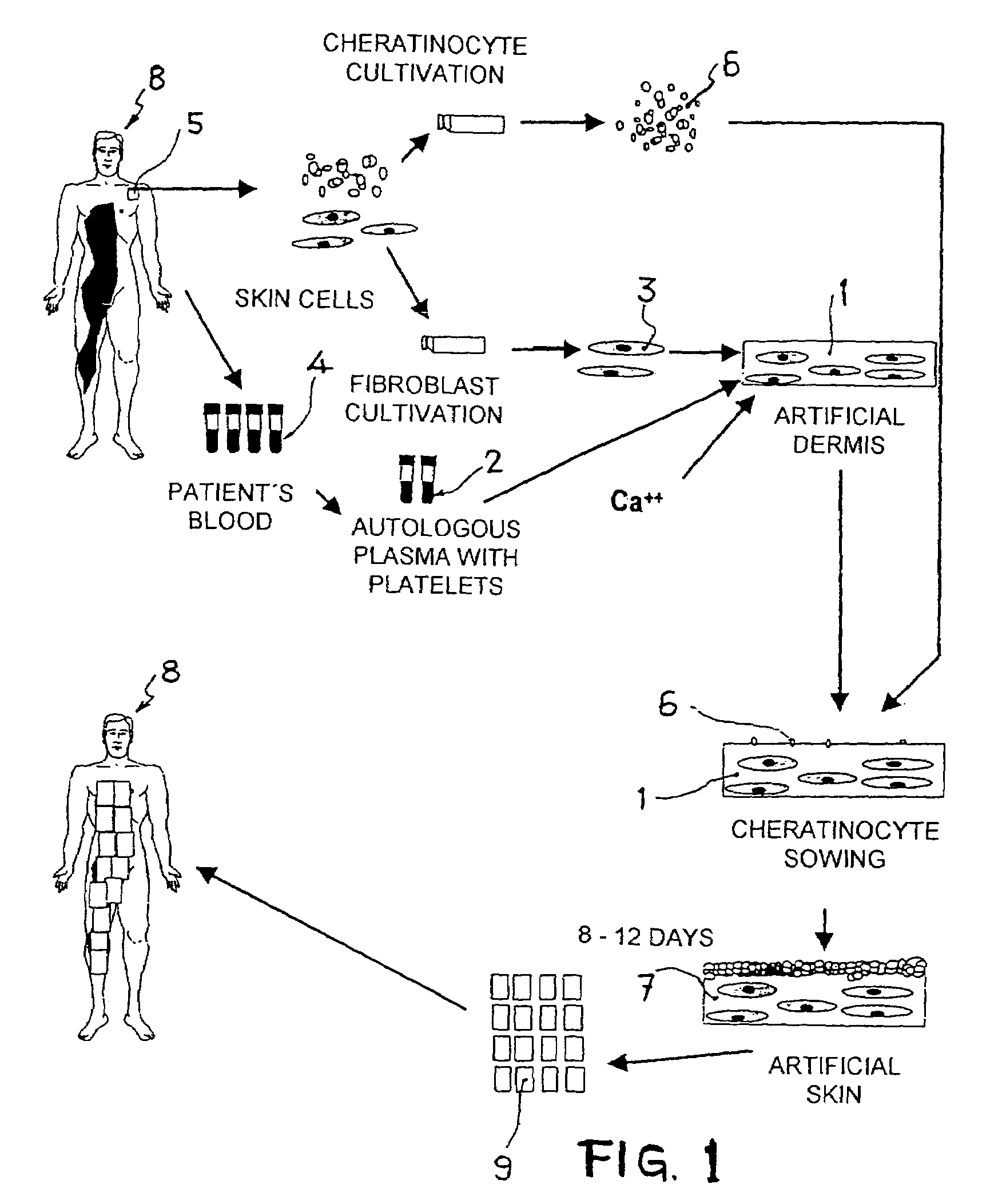Artificial dermis and production method therefor
a technology of dermis and production method, applied in the field of artificial dermis, can solve the problems of limited repair process, lack of dermal matrices capable of generating and inability of fibrin gels and fibroblasts to obtain large areas of artificial skin from minor biopsies
- Summary
- Abstract
- Description
- Claims
- Application Information
AI Technical Summary
Benefits of technology
Problems solved by technology
Method used
Image
Examples
Embodiment Construction
[0014]This invention describes the development of an artificial dermis based on the use of human plasma as the fundamental basis for the extracellular matrix. This human plasma is obtained by primary fractionating of total blood, and includes platelets in its composition. The previously cultivated dermal fibroblasts are re-suspended in the plasma, and after clotting this produces an artificial dermis. The “ex vivo” expanded keratinocytes will later be seeded on this artificial dermis. On this artificial dermis, the keratinocytes show a similar behaviour “in vitro” as in “in vivo” in the wound repair process. They adhere, migrate and grow in such a way that, from just a few cells, in 8–12 days they cover the entire surface of the plasma gel and form a stratified epithelium. The final result is that from a small initial number of cells, days later we obtain a tissue composed of two parts, one upper part of stratified epithelial cells and one lower part consisting of an extracellular m...
PUM
| Property | Measurement | Unit |
|---|---|---|
| concentration | aaaaa | aaaaa |
| volume | aaaaa | aaaaa |
| concentration | aaaaa | aaaaa |
Abstract
Description
Claims
Application Information
 Login to View More
Login to View More - R&D
- Intellectual Property
- Life Sciences
- Materials
- Tech Scout
- Unparalleled Data Quality
- Higher Quality Content
- 60% Fewer Hallucinations
Browse by: Latest US Patents, China's latest patents, Technical Efficacy Thesaurus, Application Domain, Technology Topic, Popular Technical Reports.
© 2025 PatSnap. All rights reserved.Legal|Privacy policy|Modern Slavery Act Transparency Statement|Sitemap|About US| Contact US: help@patsnap.com


